A great read written by Olivia Parkes over at Broadly
We talked to the painter Heidi Hahn about how she mines her emotions for her work, failure, and equality both in and beyond the art world.
Booklyn-based painter Heidi Hahn may be fresh out of art school, but her paintings dive deep into the medium’s rich past, surfacing with familiar subjects and styles that the young artist is bringing up to date. Immersed in narrative–figurative painting, Hahn is taking on its complicated relationship with the female body.
The women sitting or lounging in Hahn’s paintings could be the nudes reclining throughout art history or the girls of today, illuminated by screens streaming the latest episode of Girls. Hahn’s work mirrors the central problem attending the representation of women in art by literally flattening them out, translating psychological questions into formal ones, a series of problems to be solved.
Hahn breaks down the female form through style. Paraffin-thinned color stretches over the canvas; bodies dissolve into background. Faces are simplified by a cartoonish emotional shorthand—Hahn’s women are happy or sad, the top and bottom of the emoji register. Figures are reduced to color and shape; lines describe themselves. Figuration and abstraction are leveled by the plane of the canvas. Hahn takes on the gamut of painting: its possibilities and challenges, its genres and modes, even its baggage. The verdict from this corner is that she’s doing a pretty good job.
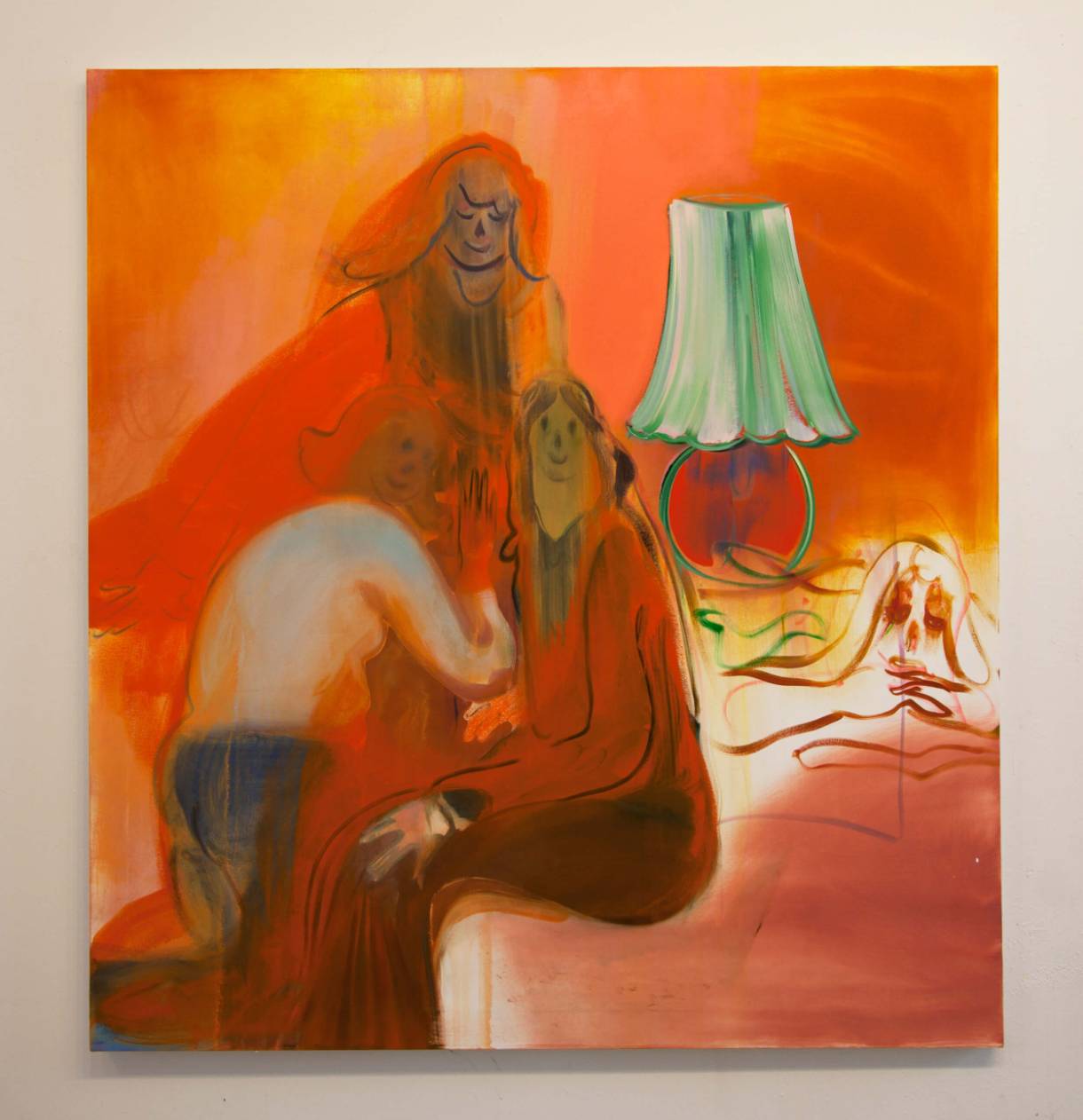
Heidi Hahn paintings of women as only Heidi Hahn can conceive…
BROADLY: How did you start with painting? Did you know straight away that it was what you were going to do?
Heidi Hahn: I started painting when I was 15, and I guess I never looked back. After all these years—I’m 33 now—I still approach every new painting with a feeling of trepidation, a sense of panic at the alchemy of it. The act of painting is always a challenge, and I respect that I will never have mastery over it. That keeps me going year after year.
You often work in series. What makes you paint the same thing again and again?
I often latch onto an image or a certain mood—I feel like I have to exhaust its hold on me in order to move on. The series start out with this one idea, and sometimes the idea will morph while I’m painting it. This distortion prompts me to keep painting the image, because I haven’t got a hold on it yet; it’s elusive, which makes me even more obsessed with it. I feel like I have been painting some of the same images for over ten years, even though they come out differently depending on what type of genre I’m painting through.

Heidi Hahn paintings of the female body
Does the composition of your paintings change a lot as you go along, or do you have a strong sense of the image before you begin?
I begin a series with one idea and see how many different ways I can make it. Usually I end up trying to put everything in the work, so I have to edit a lot out. I feel like I’m better at taking things away than putting them in. I like the idea of this sort of erasure, and as a viewer you can see a hint of the painting’s past. I like that what you are ultimately getting is just the residue of an idea.
How much do you draw from autobiography? Do the scenes and figures you depict come directly from your own life?
They definitely come from feelings I’ve had, but not necessarily specific narratives derived from my own experience. The series I finished for my solo show at Jack Hanley directly relate to me because they were paintings about women. A lot of the pathos comes from me trying to navigate expectations of equality; they also have an intimacy, so I needed to place myself in them. I had to be involved in the feeling of it.
A professor of mine once concluded that I was a “method painter” (derived from the idea of a method actor), because I had to immerse myself in the mindset of the work in order to paint the feeling of the painting. It didn’t always make for the best process, but it sometimes became a cathartic experience.
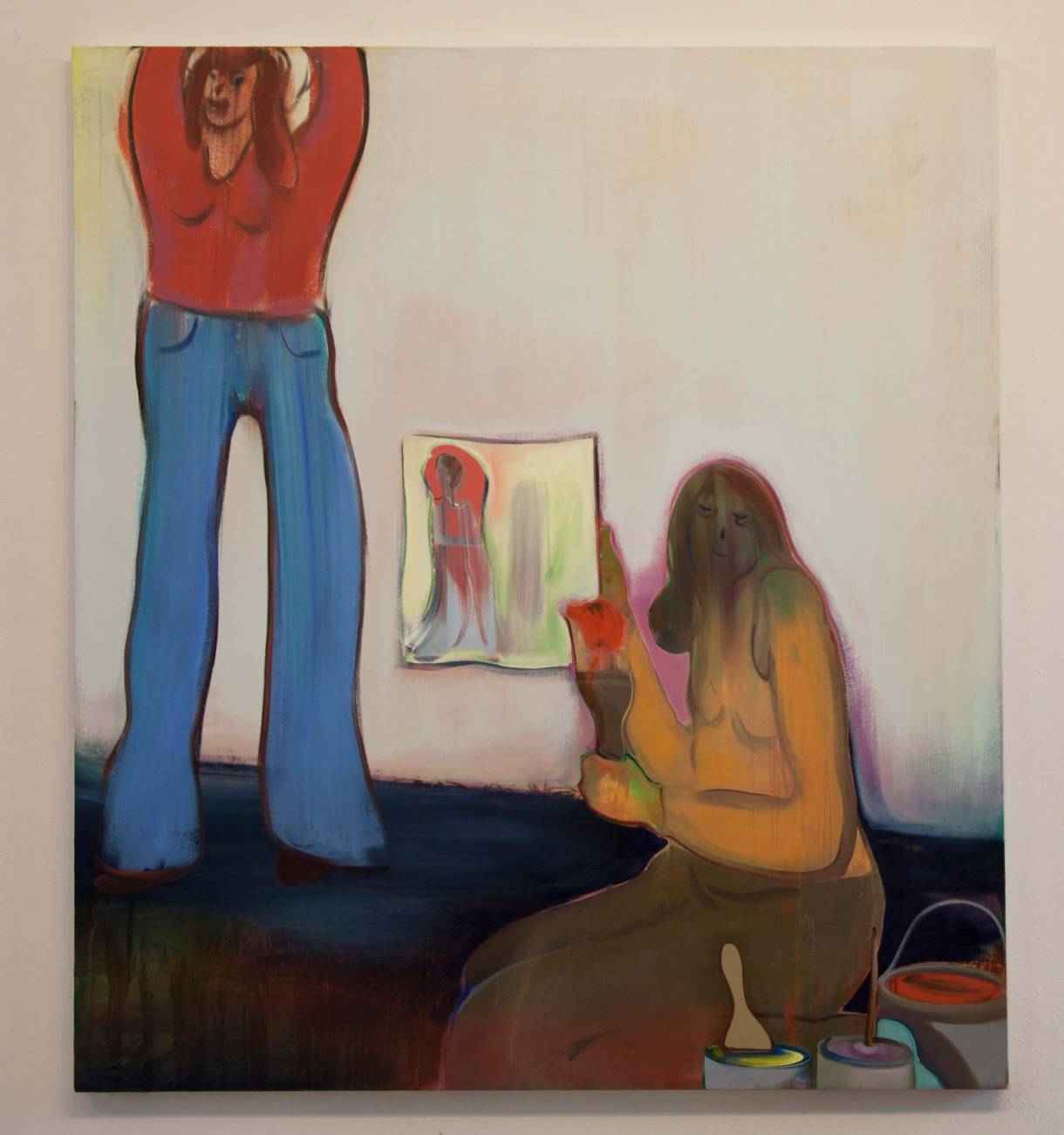
Heidi Hahn body paintings of the female
When you say you’re “trying to navigate expectations of equality”—are you talking about as a painter, or more broadly in society?
I’m talking about both, being a woman in society and a female painter. For a long time, it was hard for me to paint feminine issues; I didn’t want to be considered a “female painter”—I didn’t want my gender to define the work. I was just a painter, period. I painted a lot of men in the beginning, to kind of turn the tables, reverse the sexism in a way. I thought doing this would allow me to harness a certain kind of equality, cancel out the discrepancies between genders. Now I think it was masking insecurity about what my role was as a female painter. As my practice has matured, I don’t feel like I have to buy into the façade of empowerment by engaging with one side of the conversation. I feel most comfortable now painting women and representing them in a way that explores normal life, and I think doing so permits a more productive conversation on equality.
You’re a firmly figurative painter, and figures imply narrative. Do you think of yourself as a storyteller?
I think the figures are the story. I’m really interested in depicting people, the pathos inherent in the personality that is created. I don’t think I have made a painting in the last several years than didn’t contain some human element. Even if the figures are idle, the fact that they are in a space opens up the narrative. I’m not a strict storyteller, as I don’t point to any concrete conclusion, but I definitely leave a space for the viewer to come in with their own narrative.
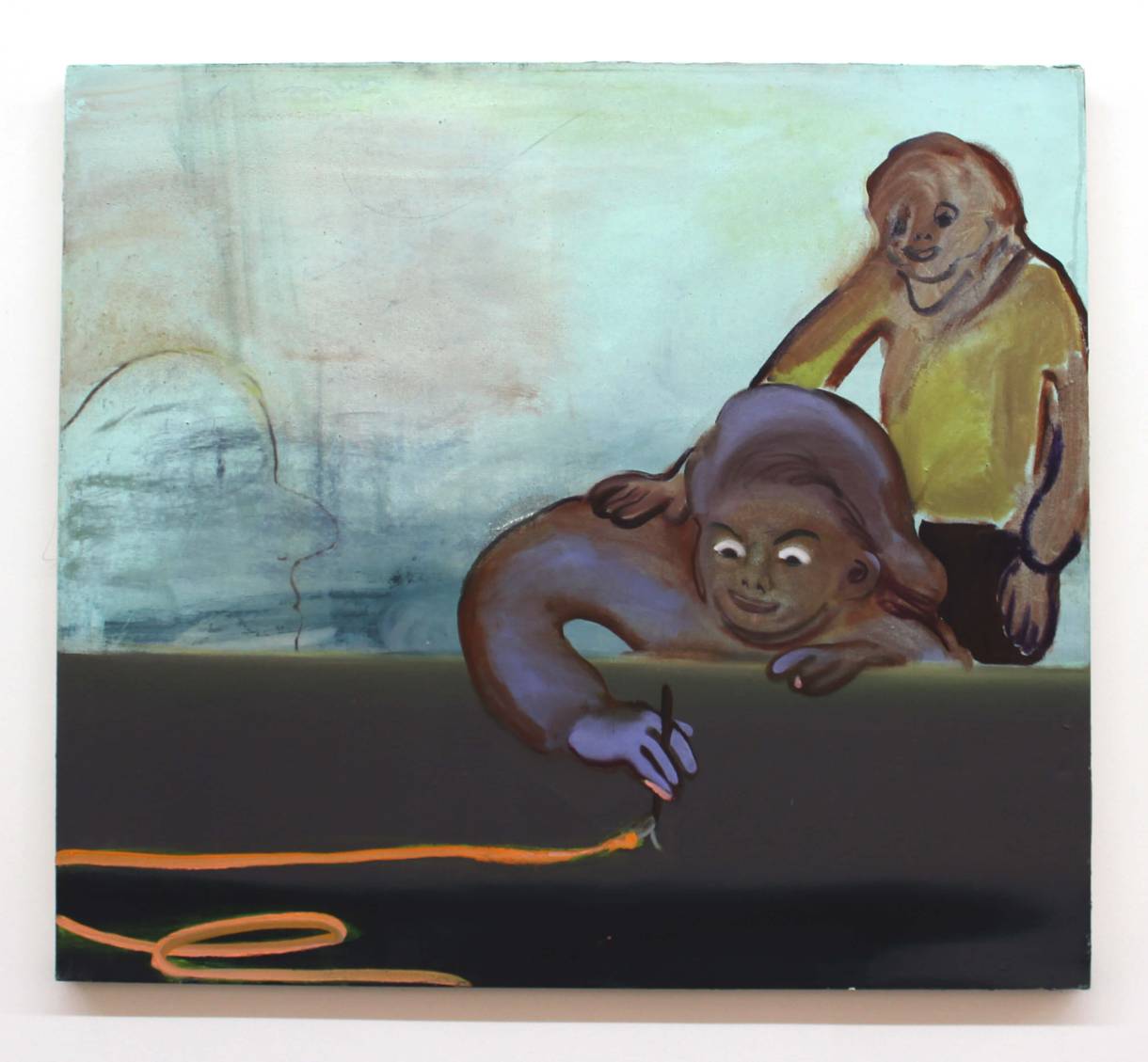
How do you balance—or move between—the narrative and formal concerns of a work?
I believe the construction of a painting is all formal concerns. Once I have the content in place, the rest of the process is figuring out how to work through the materiality of the paint. Painting has its own rules, and everything has been done before, but that challenge excites me.
I know you’re a big reader. Does any of your work come from literary sources?
Sometimes books help me name the thing I’m trying to create. If I want a certain kind of tension in a painting, I go to writers that can do it with language. With good writing I’ll believe any kind of story. I think the same can be true for painting. The mark I’m making has to carry the conviction of the gesture.
Very rarely are your figures looking at or directly engaging with each other. Who are they most involved with—you, each other, or the viewer?
I’d like to think that they all exist in their own private spaces and have nothing to really do with each other, almost like a TV miniseries where the timelines are running parallel. The stories may intertwine once in a while, but everyone gets their own life. They definitely engage with the viewer, but even then they have a sense of removal.
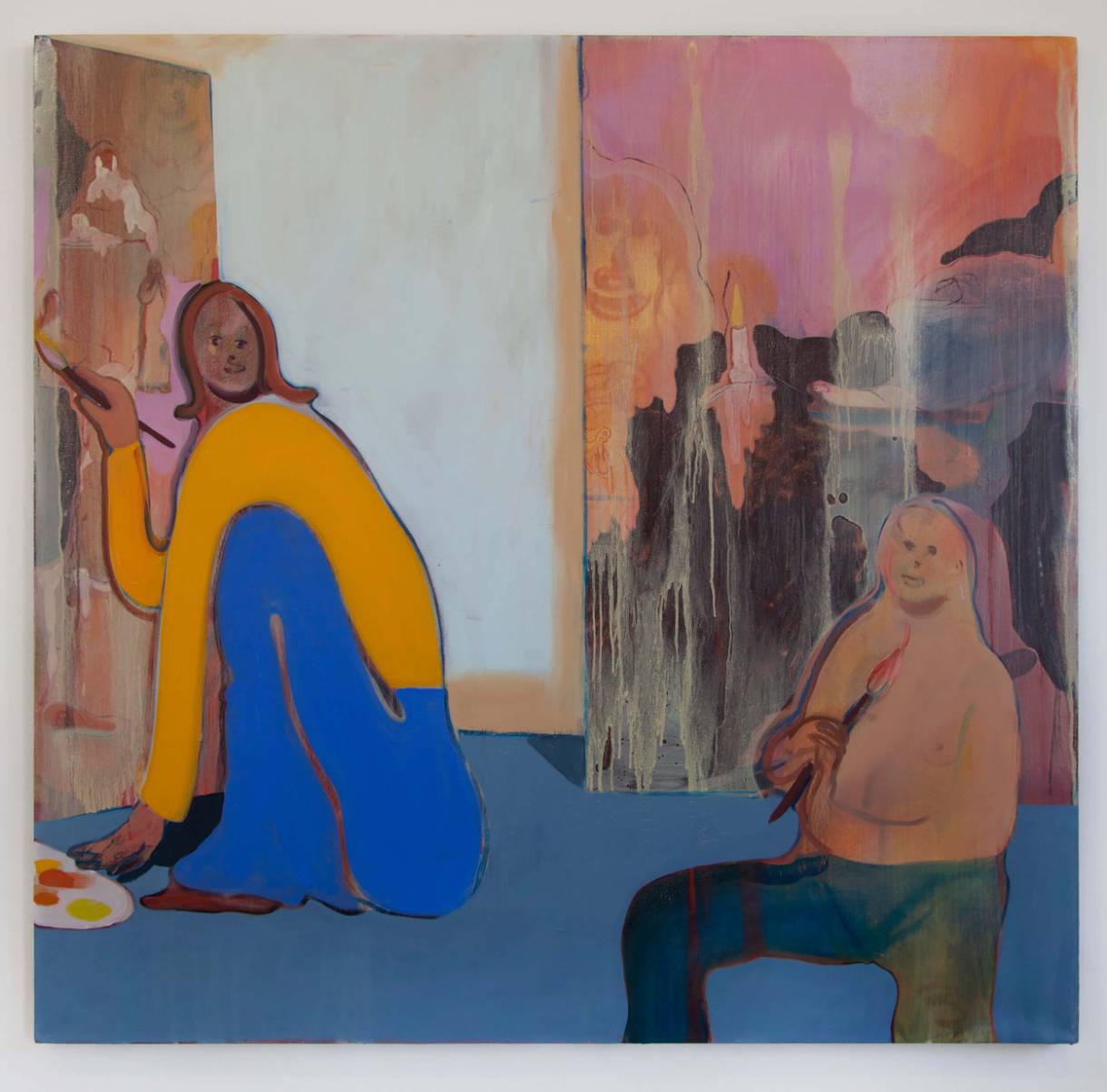
Heidi Hahn her unique style of painting women
Often it feels like the world in your paintings has only a tenuous grip on the figures, or that the figures only have a tenuous grip on the world. But quite often you outline objects or figures. What’s going on there for you?
The paintings have a way of coming in and out of definition—their position is elusive. I like that the viewer could be captivated by some part of the painting that seems to dissolve right before their eyes, maybe before they get the meaning in its entirety. I put all the information of the painting on display, but you can never feel like you have ownership over it. There is no one way to perceive something, and therefore the painting becomes endless to me.
What’s the role of art history in your work? Do you think painting is inherently concerned with its own history?
I am constantly looking at my painting through the lens of art history. I think that it’s impossible as a painter not to deal with its legacy. There are always moments when I’m working when I step back and point out moments in my paintings that carry the whiff of some artist I have admired. I think the fun comes in when you can put all the influences in there and the way they are mended in becomes about the way you paint as an individual. I try to take as much as I can get away with.
How do you begin?
I usually begin with an idea, and that might come from a television program, photograph, or stand-up comedy. The structure of stand-up comedy is riveting to me. All the emotion and expectation around how the joke will be received breaks my heart. The earnestness of the situation speaks to me as a painter, trying to get something across while still maintaining a certain autonomy. So these feelings prompt me to paint something that has that same awkwardness or feeling, and I then try to relate that to a scenario that is more expansive than its origins.
What have been the most important experiences for you as an artist?
I think failure is the most important thing. Once I give up on a painting and want to discard it, I’m able to be more generous or innovative. At that point I have nothing to lose, and that gives me the freedom and courage to go crazy with it. If the painting becomes safe, me recognizing patterns and automatic responses, then I have to walk away. Every series I do has to be different. I don’t want a recognizable style. Yes, my hand can be seen in all my work, but the genre is always slightly different.
What do you mean by “genre,” and how does it function as a tool in your own practice?
I mean genre in the traditional sense: the paintings adhering to a sort of depiction related to a style. A few series back I wanted to paint in the vein of Fragonard, so I had a lot of voluptuous drawing elements. I wanted the washed-out pastel colors of that period to be imbued in the work. In another series I wanted the paintings to take on a dark romantic quality, so I used a lot of glazes to create a depth of darkness. I like to navigate between different modes of working. I can’t sustain any one gesture—I could never paint within those perimeters.

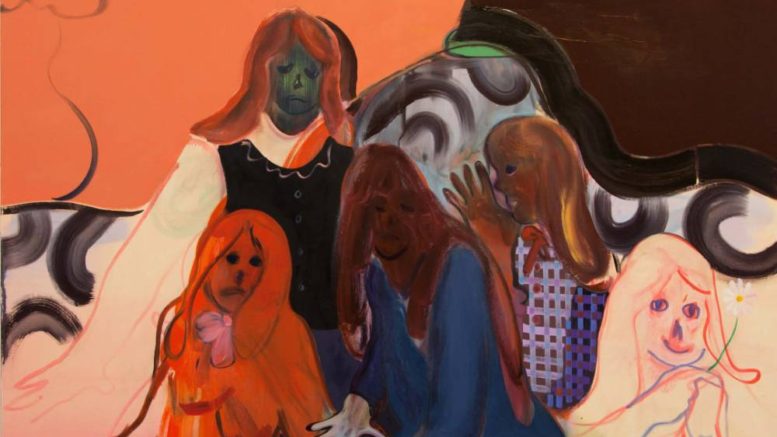
Be the first to comment on "The Artist Painting History’s Complicated Relationship to the Female Body"